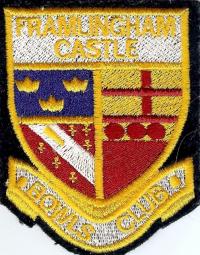
Framlingham Castle Bowls Club
A friendly welcome on one of the oldest greens in the country

A friendly welcome on one of the oldest greens in the country
Members may be asked from time to time why the mixed teams play under such seemingly meaningless names. They are all part of the history of Framlingham and in particular the castle under which name we proudly play. It is a very complicated history involving royalty and aristocratic marriages in the late middle ages. Here is a potted version for those who wish to be informed so that they can give an answer if called for (or if you just want to ‘show off’)
Mowbray. This family name became connected with the castle when Thomas Lord Mowbray married into the Brotherton family, its former owners, in 1399. Having pleased Richard II by thwarting an intrigue against him he was created Duke of Norfolk. He was also rewarded with the lands of Arundel Castle which is where the current dukes of Norfolk live. In 2008 and 2014, we played Arundel on tour. Their bowling green is also near the castle which some of us visited on those occasions. It was during this period that the Dukes of Norfolk also got to hold the office of Earl Marshall of England. With this office goes the ultimate responsibility for organising big state occasions like the coronation or royal funerals, a function they still have.
The Howard family took over the title of Dukes of Norfolk when Richard III made John Lord Howard, the cousin of Anne Mowbray thenew Duke (1483). This was another period of high intrigue. The Howards were sometimes in favour with royalty, sometimes not. The high point was when Thomas, the second Howard Duke of Norfolk, triumphed in the Battle of Flodden against the Scots in 1513. The famous Flodden Helm(et) which is positioned high up in the chancel of St. Michaels church is related to this event. The Howards had the curious chimneys added to the castle as they tried to make it a more cosy home. In the end they gave up and moved, first to near Thetford, where they had built a large house, then to Arundel where they have been ever since.
Sir Robert Hitcham (1571-1636) was the first commoner to own Framlingham Castle. Having made a fortune as a prominent lawyer in London he retired to Suffolk and bought the castle for £14,000, quite a sum in those days. It was upon his instructions that the inside of the castle was demolished, leaving the castle walls as they now are. The buildings inside are 17th century in construction as opposed to the walls which date back to 1190. Sir Robert, whose tomb is in St. Michaels Church, beside those of the Dukes of Norfolk, is well remembered in Framlingham. He left money to establish a school and almshouses. Both remain in the town. Although the castle is managed by English Heritage it is still nominally owned by Pembroke College, Cambridge. Pembroke was Sir Robert’s old college and he made the institution the trustees of his will.
Thomas Mills was another commoner who endowed Framlingham generously. He ran a very successful business as a wheelwright in the 17th century and left money to money to build and maintain almshouses as well as setting up a school. Thomas Mills was very much of the nonconformist persuasion. The history of education Framlingham in the 18th & 19th centuries was one of separation and even hostility between the Hitcham & the Mills strands of provision. The issue was somewhat resolved when a school for girls was opened in 1909, The Mills Girl’s Grammar School. This evolved into Thomas Mills High School when the state secondary schools in Framlingham merged as Suffolk went comprehensive in 1979. On the way out of Framlingham, along Station Road, look out, on your right hand side, for the long brick building, the Mills Almshouses and further along, a rectangular block which is actually the tomb of Thomas Mills respecting his wishes not to be buried on Church of England land but in his own front garden.